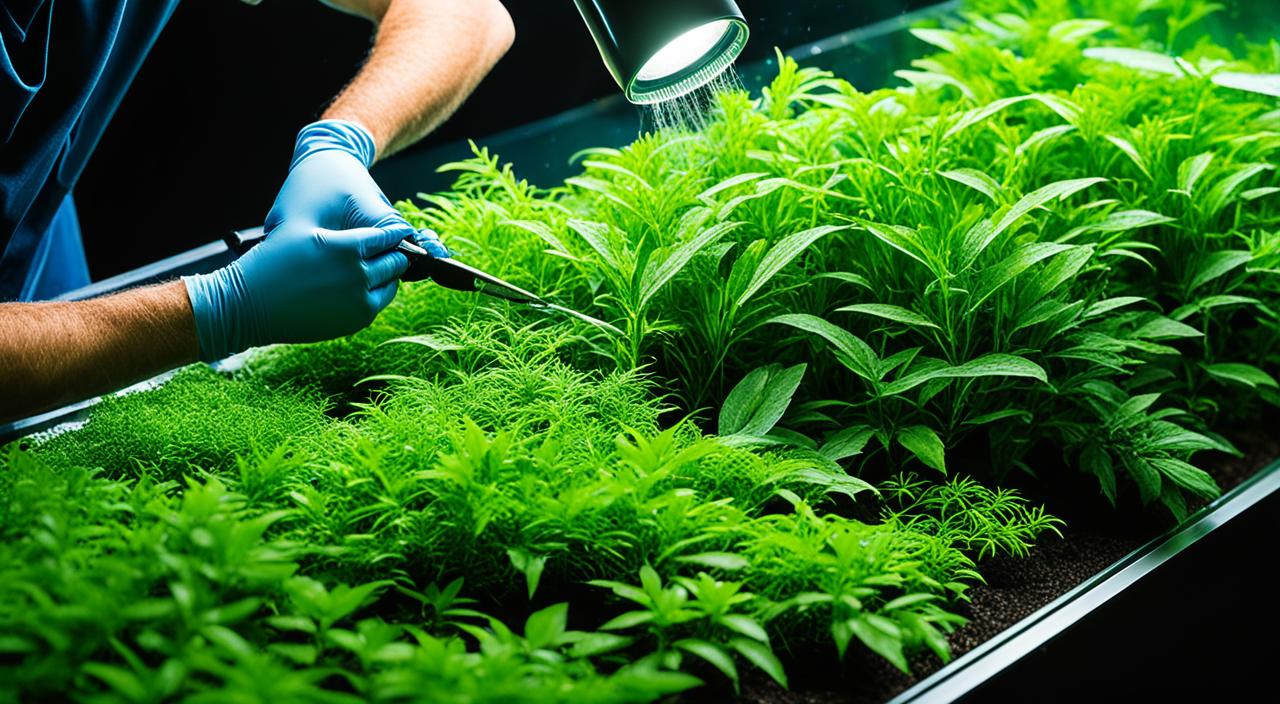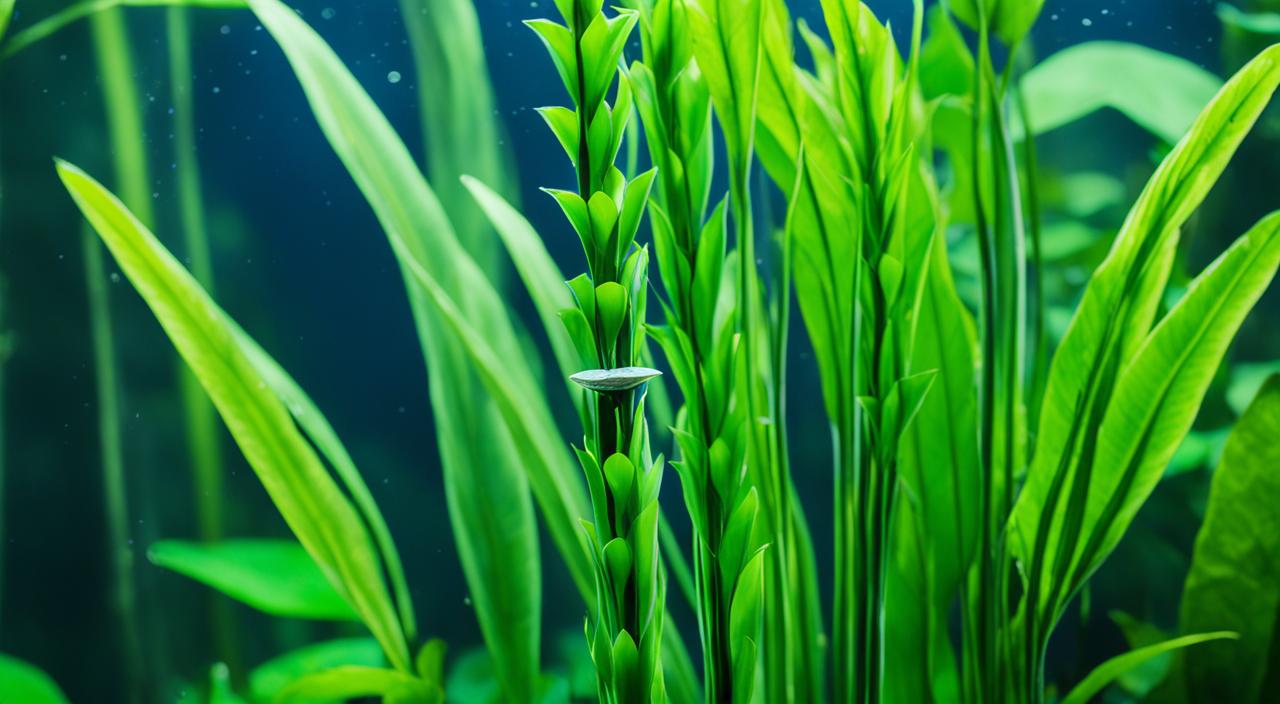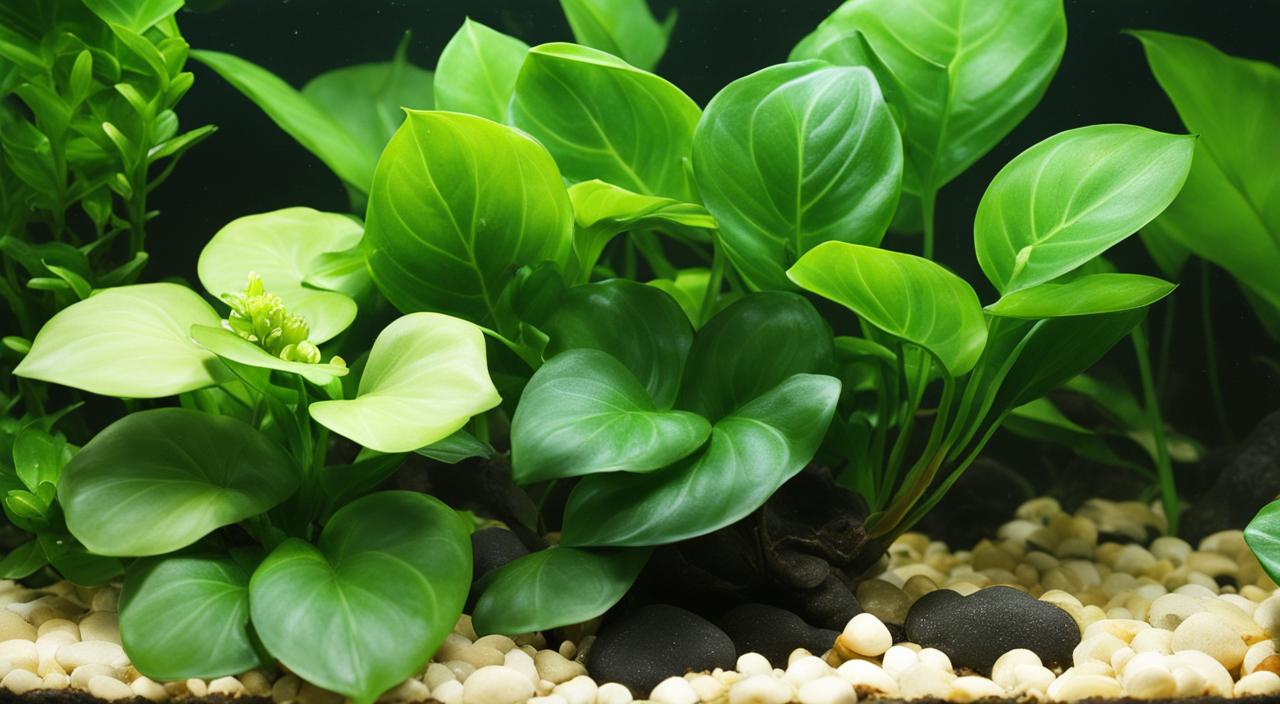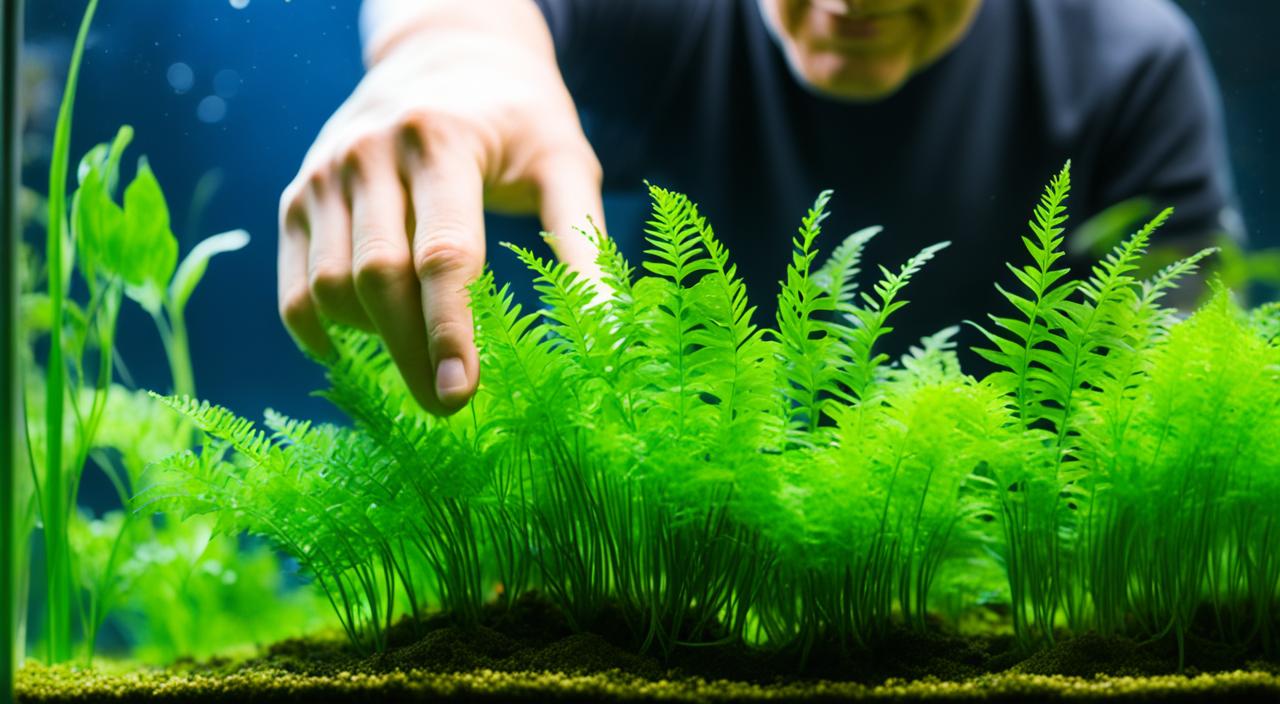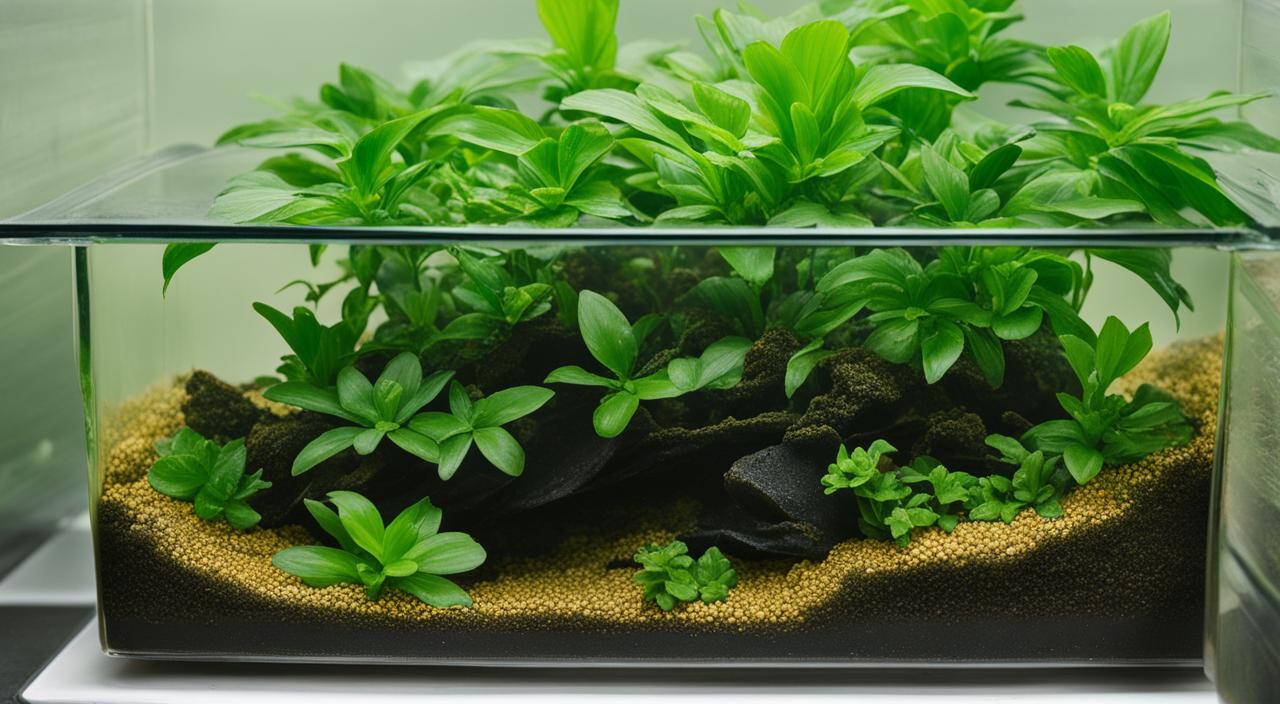Live plants can take your aquascape to the next level when creating a stunning freshwater aquarium. One such plant that can add vibrancy and visual interest to your tank is Hygrophila pinnatifida. In this article, I will guide you through the care and propagation of this versatile aquatic plant.
Hygrophila pinnatifida, also known as Hygrophila Pinnatifida, is a popular choice among aquascaping enthusiasts. It originates from India and is known for its unique leaves, which can range in colour from brown, purple, red, green, or yellow, depending on the conditions in which it is grown. This plant thrives under high-lighting conditions, benefits from CO2 supplementation, and requires regular fertilization.
To successfully care for Hygrophila pinnatifida, it is crucial to understand its growth habits and unique requirements. This plant can be submerged, emersed, and planted directly into the soil or attached to rocks or wood. Propagation can be done by cutting stems, new growth, or lateral shoots.
Key Takeaways
- Hygrophila pinnatifida is a versatile aquatic plant that adds vibrancy and visual interest to freshwater aquariums.
- It thrives under high-lighting conditions and benefits from CO2 supplementation and regular fertilization.
- Propagation can be done by cutting stems, new growth, or lateral shoots.
- When caring for Hygrophila pinnatifida, it is essential to replicate its natural habitat as closely as possible.
- Ensure adequate lighting, CO2 levels, and water parameters to promote optimal growth and vibrant colouration.
Brief Overview Of Hygrophila pinnatifida
Hygrophila pinnatifida is a stunning plant that adds vibrant colour and texture to any aquascape. Its unique leaves and varying colouration make it popular among aquascaping enthusiasts. Under lower light conditions, it tends to stay more green, but with higher light intensity, it can develop vibrant shades of red. This plant is considered more suitable for the midground of an aquarium and can create a striking contrast when paired with a grassy foreground section. Its moderate growth rate requires medium to high light levels to thrive.
Plant Information Table:
| Characteristic | Hygrophila pinnatifida |
|---|---|
| Scientific Name: | Hygrophila pinnatifida |
| Common Names: | Pinnatifida Fern |
| Origin: | India |
| Height: | 15-40 cm |
| Growth Rate: | Moderate |
| Colour: | Green leaves with a burgundy underside |
| Aquarium Placement: | Midground to Background |
| Water Type: | Freshwater |
| pH: | 5.5 – 8 |
| Care Level: | Moderate |
| Light Requirements: | High (50-70 PAR), 5000-7000 Kelvin |
| CO2 Requirements: | Recommended for optimal growth |
| Temperature: | 20-28°C (68-82°F) |
| Flow Rate: | Moderate to High |
| Propagation: | Cuttings from the main stem or lateral shoots |
| Feed Type: | Root tabs and liquid fertilizers; benefits from micronutrients and iron |
Note on Light Requirements: Hygrophila pinnatifida thrives under high lighting conditions. A PAR (Photosynthetically Active Radiation) value of 50-70 is ideal for promoting vibrant growth and colouration. Ideally, the Kelvin light rating should be between 5000 and 7000K to simulate natural daylight and support photosynthesis effectively. Higher light intensity encourages the plant to display its reddish underside and compact growth. However, balancing light with CO2 and nutrient availability is essential to prevent algae growth and ensure the plant’s health.
Origins And Habitat
Hygrophila pinnatifida, a captivating aquatic plant, is native to India. It thrives in various marine habitats, including rivers, streams, and marshes. In its natural environment, this versatile plant grows both submerged and emersed. Its adaptability allows it to tolerate varying water parameters, making it a hardy species.
To ensure optimal growth and health in a home aquarium, it is advisable to recreate the plant’s natural habitat as closely as possible. Aquarists can provide a suitable environment for Hygrophila pinnatifida to thrive by replicating the appropriate environmental conditions.
Morphological Characteristics
Hygrophila pinnatifida is characterized by its unique leaves, which are deeply lobed and have a feather-like appearance. The shape and colour of the leaves can vary depending on the growth conditions. They can range from narrow and elongated to broader and rounded. The stems of this plant are typically thin and can grow to a height of 5-8 inches. When planted in an aquarium, the stems will eventually root and anchor themselves, allowing the plant to establish and grow.
Placement And Lighting
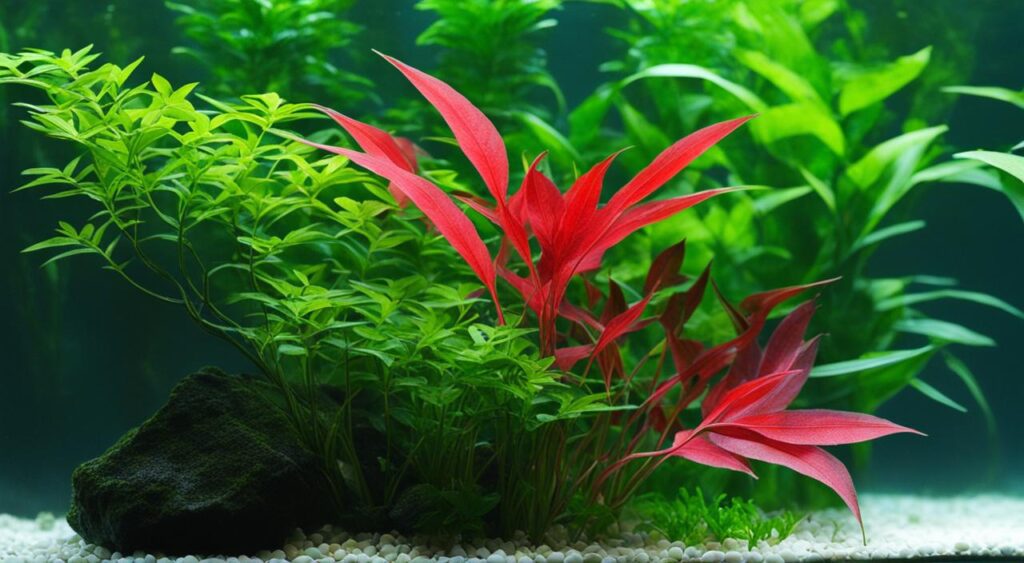
When placing hygrophila pinnatifida in an aquarium, it is best suited for the midground or background area. Its moderate growth rate and height make it ideal for creating depth and adding visual interest to an aquascape.
In terms of lighting, this plant thrives under medium to high light intensity. Adequate lighting is necessary to promote healthy and vibrant growth and encourage the development of the plant’s characteristic colours. Ensuring the plant receives sufficient light is essential to avoid stunted growth or colour fade.
Placing the hygrophila pinnatifida in the midground or background of the aquarium allows it to stand out and create a visually appealing aquascape. Its height and moderate growth rate make it an excellent choice for adding depth to the tank while providing a backdrop for other plants and decorations.
As for lighting, hygrophila pinnatifida benefits from medium to high light intensity. This ensures that the plant receives enough light energy to support photosynthesis and the production of vibrant colours. Providing adequate lighting will prevent the plant from becoming stunted or losing its characteristic hues.
Overall, careful placement and proper lighting are crucial for the successful growth and visual impact of hygrophila pinnatifida in an aquarium.
What Are Good Tank Mates?
Hygrophila pinnatifida can coexist with freshwater fish and invertebrates, making it a versatile addition to aquariums. When choosing tank mates for this plant, it is essential to consider their compatibility and behaviour to ensure a harmonious environment. Here are some suitable tank mates for hygrophila pinnatifida:
Good Tank Mates
1. Tetras: Peaceful and schooling fish like neon, cardinal, and ember tetras can coexist well with hygrophila pinnatifida. They add vibrant colours and lively movement to the aquarium.
2. Rasboras: Similar to tetras, rasboras are peaceful schooling fish that can peacefully swim alongside hygrophila pinnatifida. Popular rasbora species include harlequin rasboras and chilli rasboras.
3. Gouramis: Gouramis, such as dwarf and honey gouramis, are known for their colourful appearance and peaceful demeanour. They make excellent tank mates for hygrophila pinnatifida.
4. Small Cichlids: Some small cichlid species, like apistogrammas and rams, can coexist with hygrophila pinnatifida in larger aquariums. These cichlids usually display less aggressive behaviour compared to their larger counterparts.
5. Invertebrates: Shrimp, snails, and other invertebrates can be compatible tank mates for hygrophila pinnatifida. They help maintain a clean and balanced ecosystem by consuming algae and detritus.
Fish Species To Avoid
While hygrophila pinnatifida can thrive alongside many fish species, certain types of fish should be avoided as tank mates. These fish are known to be aggressive, tend to uproot plants, or may consume the leaves of hygrophila pinnatifida:
1. Larger Cichlids: Large cichlid species, including oscars and red devils, should be avoided as tank mates for hygrophila pinnatifida. These aggressive fish can damage or uproot the plants, deteriorating them.
2. Some Barbs: Certain barb species, such as tiger and rosy barbs, are known for nipping at plants. They may cause damage to the leaves of hygrophila pinnatifida, hindering its growth and appearance.
3. Certain Types of Goldfish: Some goldfish varieties, like comets and shubunkins, can grow large and tend to uproot plants. They are not suitable tank mates for hygrophila pinnatifida.
Before adding any fish species to the same tank as hygrophila pinnatifida, it is advisable to research their behavior, size, and compatibility with aquatic plants. This will help ensure a peaceful and thriving environment for the plant and its tank mates.
Feeding (Fertilization)
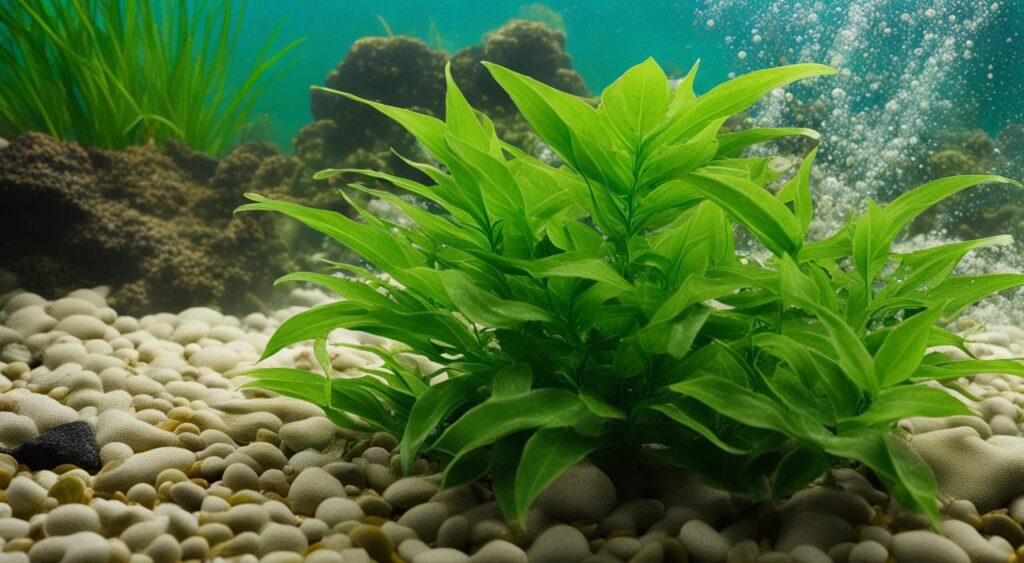
Regular fertilization is essential to promote the healthy growth and vibrant colouration of hygrophila pinnatifida. The plant can benefit from using liquid or substrate fertilizers formulated explicitly for aquatic plants. When using fertilizers, following the manufacturer’s instructions regarding the proper dosage and frequency of application is essential. A balanced fertilizer that contains vital nutrients like nitrogen, phosphorus, and potassium is suitable for hygrophila pinnatifida. However, it is crucial not to overfeed the plant, as excessive nutrient levels can lead to problems such as algae growth or nutrient imbalances. Monitoring water parameters is necessary to ensure fertilization is adjusted accordingly, maintaining optimal plant health.
How Much And How Often To Feed
Proper plant fertilization depends on accurately determining the appropriate amount and frequency of feeding. It is advisable to carefully read and follow the instructions provided by the fertilizer manufacturer. Typically, fertilizers for aquatic plants are recommended to be used once or twice a week. The dosage will vary depending on the size of the aquarium and the specific fertilizer being used. A general guideline is to start with a smaller dose and gradually increase it if necessary while closely monitoring the plant’s response and the tank’s overall nutrient levels. Regularly testing water parameters and adjusting fertilization will help maintain the optimal nutrient balance for hygrophila pinnatifida and promote its healthy growth.
| Fertilizer Type | Application Frequency | Recommended Dosage |
|---|---|---|
| Liquid Fertilizer | Once during the initial setup | Follow the manufacturer’s instructions |
| Substrate Fertilizer | Follow the manufacturer’s instructions | Follow the manufacturer’s instructions |
CO2 Injection
CO2 supplementation is crucial in promoting the growth and overall health of hygrophila pinnatifida. Carbon dioxide is essential for photosynthesis, the process by which plants convert light energy into chemical energy. By providing adequate levels of CO2, aquarium enthusiasts can enhance the growth and colouration of this beautiful aquatic plant.
Types
There are two primary methods of CO2 injection commonly used in aquariums: pressurized CO2 systems and DIY yeast CO2 reactors.
Pressurized CO2 systems offer precise control over the amount of CO2 injected into the aquarium. These systems typically consist of a CO2 cylinder, pressure regulator, and diffuser. The CO2 is released into the aquarium in a controlled manner, ensuring that plants receive the optimal amount for healthy growth. Pressurized CO2 systems are particularly suitable for larger tanks or heavily planted setups where a consistent supply of CO2 is required.
On the other hand, DIY yeast CO2 reactors are a more budget-friendly option for hobbyists. These setups utilize a mixture of yeast, sugar, and water to produce CO2 through fermentation. The CO2 is then released into the aquarium via a diffuser. While DIY yeast CO2 reactors may require more frequent maintenance to replenish the yeast mixture, they can be a viable option for smaller tanks or beginners looking to experiment with CO2 supplementation.
To determine the most suitable CO2 injection method for your aquarium, it is essential to consider factors such as tank size, plant density, and personal preferences for ease of use and level of control. Researching and understanding the pros and cons of each method will help you make an informed decision that best suits the needs of your hygrophila pinnatifida and overall aquatic ecosystem.
Care
Providing suitable care for hygrophila pinnatifida is crucial for its overall health and growth. In a planted tank, it is essential to maintain proper parameters to create an optimal environment for the plant. This includes ensuring adequate lighting, CO2 supplementation (if desired), and regular fertilization.
Planted Tank Parameters
For hygrophila pinnatifida, it is essential to maintain specific parameters to support its growth. Here are the recommended planted tank parameters:
| Parameter | Ideal Range |
|---|---|
| Lighting | Medium to high |
| CO2 Level | Supplemental CO2 can enhance growth and coloration |
| Fertilization | Regular fertilization with aquatic plant fertilizer |
Water Quality
Water quality is crucial for the health of hygrophila pinnatifida. Maintaining stable water parameters suitable for the fish species in the tank is recommended. Here are the recommended water quality parameters:
| Parameter | Ideal Range |
|---|---|
| pH | 6-7.5 |
| Hardness | Depends on the fish species |
| Temperature | Depends on the fish species |
Filtration
Adequate filtration is necessary to maintain water clarity and remove excess nutrients that can contribute to algae growth. Choose a filter that matches the size of your aquarium and provides sufficient filtration capacity.
Flow
Providing gentle water flow in the aquarium can simulate natural conditions and prevent the accumulation of debris or stagnant areas. Consider using a water pump or adjusting the filter output for gentle water movement.
Aquarium Maintenance
Regular aquarium maintenance is essential for the overall health and longevity of hygrophila pinnatifida. By implementing proper maintenance practices, you can ensure that the plant thrives and contributes to a vibrant and balanced aquatic ecosystem. This section will cover the critical aspects of aquarium maintenance for hygrophila pinnatifida, including testing water conditions, setting up the aquarium tank, and propagation methods.
Testing Water Conditions
To maintain optimal conditions for hygrophila pinnatifida, it is crucial to test and monitor water parameters in the aquarium regularly. The following parameters should be assessed:
- pH levels: Aim for a pH range of 6.0 to 7.5 to create a suitable environment for the plant.
- Temperature: Maintain a consistent temperature between 72°F and 82°F for optimal growth and health.
- Ammonia, Nitrite, and Nitrate levels: Regularly test these parameters to ensure a healthy nitrogen cycle and prevent any toxic buildup.
With regular testing, you can detect any fluctuations or imbalances in water conditions and take appropriate measures to correct them before they impact the health of hygrophila pinnatifida.
How To Set Up Your Aquarium Tank
Properly setting up the aquarium tank is crucial for creating an ideal environment for hygrophila pinnatifida. Consider the following factors:
- Substrate: Choose a suitable substrate that provides nutrients for plant growth. Substrate types like nutrient-rich soil or specialized aquatic plant substrate can enhance the plant’s health and development.
- Lighting: Provide adequate lighting for hygrophila pinnatifida to thrive. High-quality LED or fluorescent lights with a colour temperature of around 6500K are recommended for optimal growth and colouration.
- Filtration: Install an efficient filtration system to maintain water clarity and remove any excess nutrients or waste that can contribute to algae growth.
Additionally, properly acclimating hygrophila pinnatifida before introducing it to the tank is crucial. Follow the recommended acclimation process to minimize stress and allow the plant to adjust to its new environment more effectively.
Propagation Methods
Hygrophila pinnatifida can be propagated through various methods, enabling you to expand your plant collection and maintain the desired shape and size of the plant. The following propagation methods can be employed:
- Cutting Stems: Trim healthy stems and replant them in the substrate to encourage new root growth and the development of new plants.
- New Growth: Monitor the plant for new shoots or leaves and carefully separate them from the parent plant. Replant the new growth in suitable areas of the tank.
- Lateral Shoots: As hygrophila pinnatifida grows, lateral shoots can be separated and replanted as independent plants.
By utilizing these propagation methods, you can maintain a healthy and thriving population of hygrophila pinnatifida in your aquarium.
| Testing Water Conditions | How To Set Up Your Aquarium Tank | Propagation Methods |
|---|---|---|
| Regularly test pH, temperature, ammonia, nitrite, and nitrate levels. | Choose a suitable substrate, provide adequate lighting, and install an efficient filtration system. | Propagate through cutting stems, new growth, or lateral shoots to expand your plant collection. |
Health And Disease
Monitoring the health of hygrophila pinnatifida is essential to ensure optimal growth and prevent the onset of any health issues. Understanding the signs of good health and identifying indicators of poor health in this aquatic plant is essential.
Signs Of Good Health
Signs of good health in hygrophila pinnatifida include vibrant colouration, active growth, and the absence of visible damage or diseases. The plant should have lush green leaves with characteristic shapes and textures. New shoots and the development of additional leaves evidence active growth.
Signs Of Poor Health
Signs of poor health in hygrophila pinnatifida may include stunted growth, yellowing or browning of leaves, wilting, and the presence of algae. Stunted growth can indicate nutrient deficiencies or suboptimal growing conditions. Yellowing or browning of leaves may indicate nutrient imbalances or poor water quality. Wilting can occur due to inadequate water or nutrient uptake. Algae on the leaves may indicate an imbalance in the aquarium’s ecosystem, such as excess nutrients or insufficient lighting.
Common Health Issues And Treatment
Common health issues that may affect hygrophila pinnatifida include nutrient deficiencies, algae overgrowth, improper lighting or CO2 levels, and diseases caused by bacterial or fungal infections. Treating these issues often involves adjusting water parameters, addressing nutrient imbalances through fertilization, and providing suitable treatment methods for identified diseases. Regular water testing and monitoring can help proactively identify and address these health issues.
Plant Pests
Plant pests can also affect the health of hygrophila pinnatifida. Snails, algae, or other hitchhikers may attach themselves to the plant and compete for nutrients, causing damage or inhibiting growth. Taking appropriate measures to control or eliminate these pests, such as manual removal or introducing natural predators, is vital for the overall well-being of the plant.
Summary
Hygrophila pinnatifida is a versatile and visually stunning aquatic plant that can add vibrant colour and texture to any aquarium. With proper care and maintenance, you can enjoy the beauty of this plant in your home aquarium.
To ensure the health and growth of hygrophila pinnatifida, it is essential to provide suitable lighting, CO2 supplementation (if desired), and regular fertilization. Adequate water quality and filtration are also essential. Monitor water parameters regularly and address any issues promptly to maintain optimal plant health.
Hygrophila pinnatifida can be propagated through various methods, such as cutting stems or replanting lateral shoots. You can ensure the plant remains visually appealing by carefully trimming and maintaining the desired shape.
Follow these care tips, create a suitable environment, and you will be able to enjoy the vibrant colours and texture that hygrophila pinnatifida brings to your home aquarium.
FAQ
What is hygrophila pinnatifida?
Hygrophila pinnatifida, also known as Hygrophila Pinnatifida, is a versatile aquatic plant that adds vibrant color and texture to any aquarium.
How do I care for hygrophila pinnatifida?
Hygrophila pinnatifida requires suitable lighting, CO2 supplementation (if desired), regular fertilization, and proper water quality to thrive.
What are the origins and habitat of hygrophila pinnatifida?
Hygrophila pinnatifida originates from India and can be found growing in aquatic habitats such as rivers, streams, and marshes.
What are the morphological characteristics of hygrophila pinnatifida?
Hygrophila pinnatifida is characterized by its unique, deeply lobed leaves and thin stems that can grow to a height of 5-8 inches.
Where should I place hygrophila pinnatifida in my aquarium?
Hygrophila pinnatifida is best suited for the midground or background area of an aquarium and thrives under medium to high light intensity.
What are suitable tank mates for hygrophila pinnatifida?
Suitable tank mates for hygrophila pinnatifida include peaceful community fish such as tetras, rasboras, gouramis, and small cichlids, as well as shrimp and snails.
How should I feed hygrophila pinnatifida?
Hygrophila pinnatifida benefits from regular fertilization with balanced aquatic plant fertilizers and following the manufacturer’s instructions for proper dosage and frequency.
Should I supplement CO2 for hygrophila pinnatifida?
CO2 supplementation is beneficial for the growth and health of hygrophila pinnatifida and can enhance plant growth and coloration.
What care parameters should I follow for hygrophila pinnatifida?
It is important to maintain proper lighting, CO2 levels (if desired), water quality, filtration, and flow to provide optimal care for hygrophila pinnatifida.
How do I maintain and propagate hygrophila pinnatifida?
Regular aquarium maintenance, testing water conditions, and careful trimming and replanting can help maintain and propagate hygrophila pinnatifida.
What are the signs of good health and common health issues for hygrophila pinnatifida?
Signs of good health include vibrant coloration and active growth, while common health issues can include nutrient deficiencies, algae overgrowth, and diseases. Taking appropriate measures to address these issues is important for the plant’s overall well-being.
How can I summarize the care and maintenance of hygrophila pinnatifida?
Providing suitable lighting, CO2 levels (if desired), regular fertilization, and proper water quality and filtration, along with regular monitoring and maintenance, are key to caring for hygrophila pinnatifida in the aquarium.

